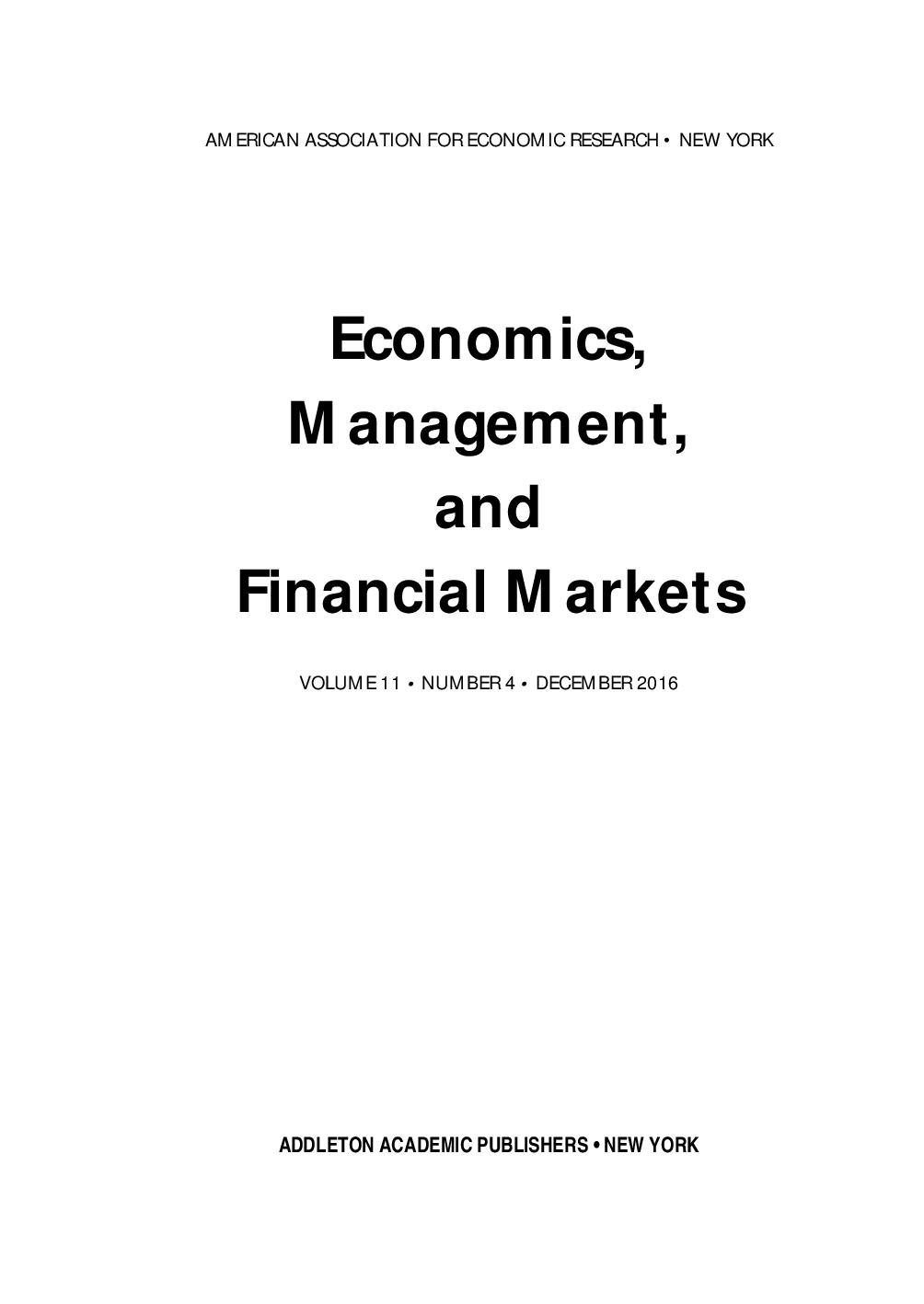EFFICIENCY OF FOREIGN EXCHANGE MARKET OF SRI LANKA: SOME EMPIRICAL EVIDENCE
EFFICIENCY OF FOREIGN EXCHANGE MARKET OF SRI LANKA: SOME EMPIRICAL EVIDENCE
Author(s): Guneratne B. WickremasingheSubject(s): Financial Markets
Published by: Addleton Academic Publishers
Keywords: efficient market hypothesis; Sri Lanka; structural breaks; cointegration;
Summary/Abstract: The purpose of this paper is to examine the validity of the weak and semi-strong form efficiencies of the foreign exchange market (FX) of Sri Lanka. This study departs from previous Sri Lankan studies by examining structural changes in the time series via unit roots tests as well as a cointegration test, developed by Saikkonen and Lütkepohl (2000a, 2000b, 2000c). The data comprised end of month exchange rates for the Japanese yen, British pound, Indian rupee, and the US dollar in terms of the Sri Lankan rupee for the period January 1995 to September 2013. The findings indicate that the Sri Lankan FX market is consistent with both the weak and semi-strong versions of the efficient market hypothesis. These results, which have important implications for the participants of the FX market of Sri Lanka, suggest that participants cannot devise modeling techniques which would result in abnormal gains. The implication for Government authorities is that they can only exert a minimal influence on exchange rates. This is the first study that employs the statistical techniques mentioned above to investigate the validity of the weak and semi-strong form efficiencies of the Sri Lankan FX market.
Journal: Economics, Management, and Financial Markets
- Issue Year: 11/2016
- Issue No: 4
- Page Range: 49-60
- Page Count: 12
- Language: English
- Content File-PDF

